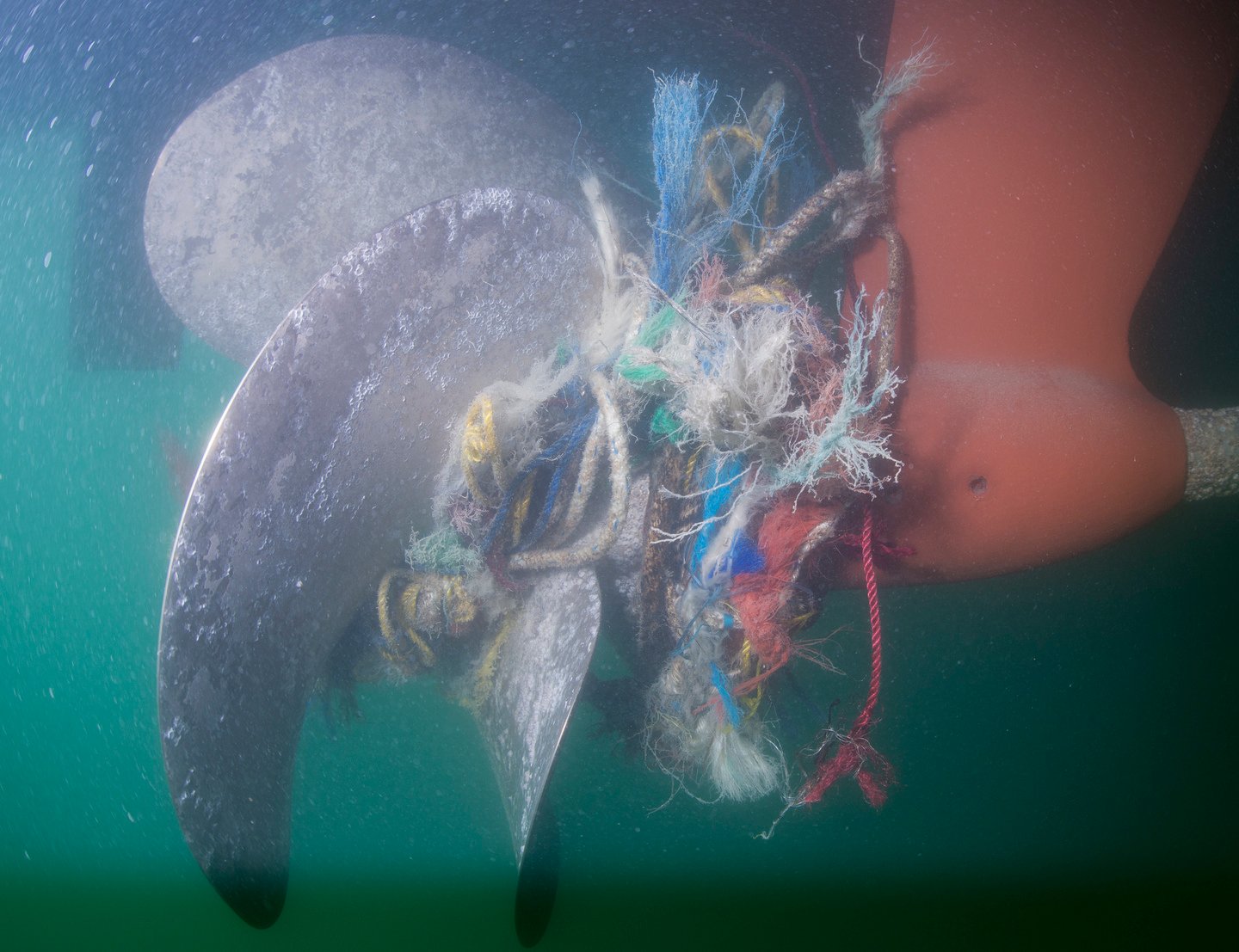If you have ever gotten a line wrapped around your propeller on a boat with a diesel engine, you know what a nightmare it can be.
Whether it be your own anchor line, fish netting adrift at sea, crab pot lines with buoys that are too often covered in dark algae and impossible to see or any myriad of lines that can foul your propeller, it’s a problem.
Diving down with a knife often in cold water to cut the lines or worse having to get towed into shore, getting a line wrapped around a propeller is awful and something to be avoided. For any boater who has dealt with this, it is something we never want to deal with again.
Lines getting caught in propellers is yet one more advantage of electric propulsion, and something most boaters often don’t think about when thinking about the advantages of electric propulsion.
Let’s look at a Yanmar 3YM30AE engine vs an Oceanvolt ServoProp 10kW motor to understand why wrapped lines are less of a problem on an electric boat.
If you look at the Yanmar 3YM30AE data sheet, you’ll see on the second page in the Torque at the Crankshaft graph that torque at the crankshaft is between 63-79 Newton-meters.
On an Oceanvolt ServoProp, like any electric motor in a car or boat, the torque is instantaneous. But, the max torque required for full speed of 12Nm of torque is less than the torque at the crankshaft of a diesel engine. This allows one to program a torque limit of 15 Nm and if you do get a line on your propeller, it will generate a stall error instead of continuing to twist the line tighter and tighter around your propeller shaft. This then limits the motor to only operating at low torque and slow RPMs in what is called a prevention loss strategy until the error code is cleared.
An electric motor is not magic and cannot keep a line from ever touching your propeller or getting caught. But, It can prevent a line from getting wrapped tightly with lots of force around your propeller and shaft. Most of the time, unfouling a line from a propeller on an electric boat is a quick and easy process that takes a few minutes instead of the head-scratching pain of cutting or undoing very tightly wound lines on a boat with a diesel engine.



Leave Comment